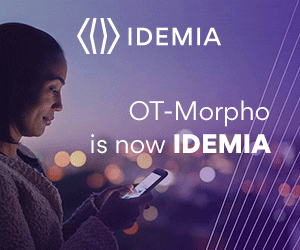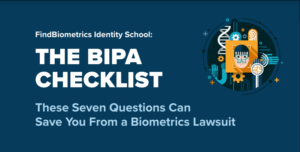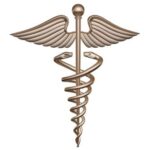For reasons that are all too obvious, the topic of healthcare has been top of mind for many people around the globe over the past year. That’s why our first in-depth feature for Healthcare Biometrics Month last week looked squarely at how biometric technology was being used to directly address the conditions of the COVID-19 pandemic, from biometric wearables that can detect the early signs of infection to biometrics-backed immunity credentials.
Having addressed the elephant in the room, this week we’re turning to a healthcare trend that has been consistently rising in prominence in recent years, and is likely to accelerate in the wake of COVID-19: biometric patient identification.
Improving Outcomes
In the hospital and other clinical settings, patient identification is a matter of critical importance. Patients must be accurately identified in order to access the right healthcare records, and this poses a serious challenge in situations in which patients are unable to identify themselves due to incapacitation or confusion.
Biometrics offer a compelling answer. Tying a patient’s records to biometric data means that they can be reliably identified and matched to the correct documentation under virtually any circumstances. A Credence ID solution developed for a universal healthcare program in Senegal, for example, links patient’s records to their face and fingerprint biometrics, while Imprivata has been blazing a trail in the U.S. with its use of palm vein biometrics for patient identification.
The biometric approach to patient ID is one that a growing number of hospital administrators are starting to believe in. When the Missouri-based healthcare provider CoxHealth implemented Imprivata’s PatientSecure solution in 2018, the organization’s IT director, Jack Cole, was emphatic about its potential to reduce harm.
“Consider a person arriving in the ED with no ID, it could make all the difference in the outcome,” he said. “This technology will save lives.”
That line of thinking is not based on hypothetical scenarios. A poll of Chief Information Officers in the healthcare sector from that same year found 17 percent of respondents acknowledging that patient harm had occurred at their institution due to patient misidentification. Improving the accuracy and reliability of patient identification through biometrics can have very tangible effects with respect to the provision of care, and patient outcomes.
Easing the Strain
Implementing biometric patient ID isn’t just about improving outcomes for patients, though. It offers real administrative benefits to healthcare systems that are notoriously overburdened with records and paperwork.
A survey conducted by NextGate and the eHealth Initiative Foundation last year found that the majority (80 percent) of healthcare providers and Health Information Exchanges are compelled to assign dedicated employees to the task of resolving duplicate records, and that roughly two-thirds of healthcare providers have duplicate records accounting for more than three percent of their total patient records.
Tying patient records directly to biometric templates can virtually eliminate this issue, freeing up resources to focus on the many other pressing matters facing healthcare providers. At a time when the strain on resources is clearer than ever in the healthcare sector, it’s especially clear just how important this approach to patient records could be in easing the burden; and even after the pandemic, the intensifying healthcare needs of the boomer generation will mean that the patient records issue must be addressed effectively.
Prescribing Safety
Finally, biometric patient ID can also offer some serious benefits outside of hospital settings, in the area of Electronic Prescriptions for Controlled Substances, or EPCS. EPCS has seen a steady rise over the past several years as digitization has started to sweep over the healthcare sector, and has become all the more important in the wake of the pandemic’s social distancing restrictions. And as with patient records, linking patient’s biometrics to their prescriptions can help to ensure that proper care is being given while easing the administrative burden on healthcare providers.
What’s more, the use of biometrics in EPCS can help in the ongoing fights against the Opioid Crisis. Testifying to the FDA’s Opioid Policy Steering Committee in 2018, HID Global IAM Solutions VP Brad Jarvis argued that “electronic prescriptions would curb the over-prescribing of opioids and prevent the highly addictive drugs from falling into the wrong hands,” adding, “People’s lives will be saved.” Adding biometric identification to the scenario would reduce the risk of abuse even further, ensuring that the correct patient is getting the right doses of the right medicine.
It’s another example of the basic sales pitch for biometric patient identification: it can help to reduce administrative burdens, and it can improve patient outcomes. to put it more bluntly, it can help healthcare providers to save both money and lives. It’s an argument that has been gaining traction in recent years, and will reach even more receptive audiences in the wake of the pandemic.
*
Healthcare Biometric Month is sponsored by IDEMIA, TECH5, and Veratad.
–
March 11, 2021 – by Alex Perala










Follow Us